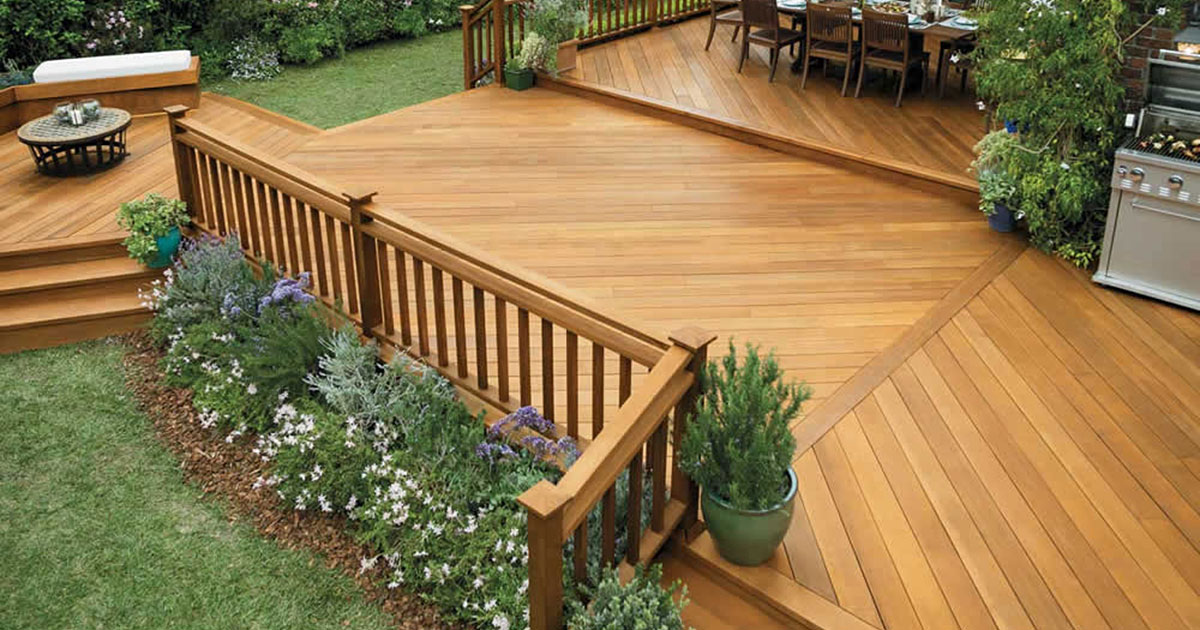Revitalize Your Outdoors: Specialist Deck Staining Providers
Wiki Article
Choosing the Right Stain for Your Fencing: Tips and Factors To Consider
When it comes to improving the appearance and maintaining of your fence, selecting the best stain is vital. We will certainly discover the different types of fence discolorations, factors to consider before choosing a discolor, pointers for preparing your fence for discoloration, and the differences in between oil-based and water-based discolorations. Furthermore, we will dive right into picking the appropriate tarnish color to match your fence and enhance your exterior room.Comprehending Different Types of Fence Stains

On the other hand, water-based spots are made from acrylic or latex and use an extra refined shade to the wood. Water-based spots are much easier to cleanse up and have a much faster drying out time contrasted to oil-based stains.
Selecting between water-based and oil-based discolorations relies on numerous variables, including personal choice, the wanted appearance, and the degree of upkeep required. Oil-based stains are recommended for surround high-traffic locations or those frequently exposed to extreme weather problems. fence staining. Water-based spots, on the other hand, are a popular option for fence houses where look and convenience of usage are necessary
When choosing the best stain for their fencing,Comprehending the differences between water-based and oil-based spots assists homeowners make an educated decision. Thinking about the particular demands of the fencing, such as its location, direct exposure to sunlight, and desired visual, will certainly guarantee that the picked discolor offers durable security and enhances the general beauty of the fencing.
Aspects to Think About Before Selecting a Stain

An additional factor to consider is the kind of wood your fencing is made from. Different kinds of wood soak up spots in a different way, resulting in differing levels of color strength and durability. For instance, softwoods like want might call for more frequent discoloration compared to woods like cedar or redwood. Additionally, certain timbers may be a lot more prone to concerns like rot or insect invasion, which may affect the selection of stain to protect the fence and secure.
The environment and climate condition in your area must likewise be thought about. If you live in an area with severe wintertimes or high moisture, you might require a tarnish that gives extra protection against moisture and UV rays. Similarly, if your fencing is subjected to guide sunlight for extended periods, a stain with UV inhibitors can assist avoid fading and discoloration.
Last but not least, it is very important to consider your wanted visual. Different stains offer numerous colors and finishes, permitting you to personalize the appearance of your fencing (deck staining). Think about the overall design and style of your property, along with any kind of regional policies or homeowner organization guidelines that might dictate the appropriate stain colors
Tips for Preparing Your Fence for Discoloration
To prepare your fence for discoloration, begin by completely cleaning the surface using a light detergent and a stress washing machine or scrub brush. Cleansing the fencing is a vital step as it gets rid of dust, crud, and any previous layers that may disrupt the discoloration process. Begin by wetting the fencing with water and after that apply a moderate detergent making use of a scrub brush or a pressure washer with a low-pressure setting. Scrub the surface carefully, paying extra attention to areas with persistent stains or mold and mildew. Wash the fence extensively with tidy water to remove all traces of detergent.This action is critical as staining a damp or wet surface area can lead to poor adhesion and an uneven finish. Make certain that the fencing is completely dry before continuing with the discoloration procedure.
Before staining, inspect the fencing for any kind of problems, such as loosened boards or nails. This product helps to open the timber pores, permitting the discolor to permeate much more successfully and uniformly.

Contrasting Oil-Based and Water-Based Spots
When picking a tarnish for your fence, it is necessary to contrast the characteristics and benefits of water-based and oil-based discolorations. Both kinds of stains have their very own advantages and factors to consider, so it is crucial to comprehend the distinctions in between them.Oil-based stains are recognized for their sturdiness and resistance to tear and wear. They penetrate deeply into the timber, giving exceptional protection against the elements. They likewise improve the all-natural appeal of the wood by highlighting its grain and structure. Furthermore, oil-based discolorations often tend to last longer than water-based discolorations, making them a popular choice for fencings.
On the other hand, water-based discolorations are a lot more ecologically friendly and easier to cleanse up. They may not provide the very same level of defense as oil-based stains, specifically in extreme weather problems.
Eventually, the choice in between water-based and oil-based stains depends on your details requirements and preferences. When making your decision, take into consideration aspects such as sturdiness, ecological effect, and convenience of application. Consulting with an expert or looking for recommendations from specialists can likewise aid guarantee that you pick the best tarnish for your fence.
Selecting the Right Stain Shade for Your Fencing
The selection of a proper stain color for your fence is an essential facet of boosting its aesthetic charm and complementing the general style of your outdoor area (fence staining and sealing). The right tarnish shade can transform a plain, common fence right into a striking centerpiece that adds depth and personality to your homeWhen selecting a tarnish color for your fencing, it is vital to take into consideration the design and design of your home. If you have a traditional or typical style home, natural tones such as browns and neutrals can produce a warm and welcoming appearance. On the various other hand, if you have a modern-day or contemporary home, you might think about selecting strong and lively shades that make a statement.
One more variable to think about is the all-natural environments of your property. If you have a great deal of plant, a tarnish shade that complements the all-natural landscape, such as environment-friendlies or crimsons, can create a natural and unified appearance.
Additionally, it's worth thinking about the upkeep needed for various tarnish colors. Lighter colors have a tendency to show dust and use even more conveniently, while darker shades can hide imperfections and require less regular touch-ups.
Eventually, the option of discolor shade for your fencing need to mirror your individual design and choices - fence staining companies. additional reading Make the effort to discover different choices and get in touch with with professionals if needed, to ensure that you select the best tarnish shade that boosts the charm and charm of your fencing
Verdict
To conclude, when it pertains to picking the appropriate tarnish for your fencing, it is very important to comprehend the various sorts of discolorations available and take into consideration elements such as sturdiness and desired look. Preparing the fence properly before discoloration is crucial for achieving optimal outcomes. Furthermore, contrasting water-based and oil-based discolorations can aid determine the best option for your specific needs. Lastly, selecting the right stain color can boost the total visual appeals of your fence.We will check out the different types of fencing discolorations, elements to consider prior to picking a tarnish, ideas for preparing your fence for discoloration, and the differences in between oil-based and water-based stains.Separating between oil-based and water-based spots is essential when understanding various kinds of fence discolorations. Water-based spots are easier to cleanse up and have a faster drying out time compared to oil-based spots. Additionally, oil-based spots often tend to last longer than water-based spots, making them a preferred option for fencings.
In conclusion, when it comes to picking the best tarnish for your fence, it is essential to recognize the different kinds of stains offered and take into consideration factors such as durability and preferred look.
Report this wiki page